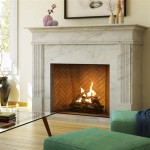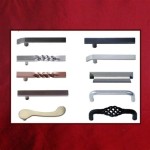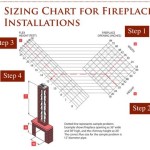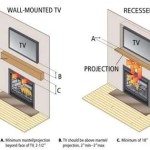Choosing the Right Mantle for Your Gas Fireplace
A gas fireplace provides ambiance and warmth to a home. Selecting the appropriate mantle is crucial for enhancing both its aesthetic appeal and ensuring safety. The mantle serves as a focal point, framing the fireplace and offering a surface for decorative items. However, because it sits above a heat source, careful consideration must be given to material selection, size, and installation.
Prior to choosing a mantle, understanding local building codes and manufacturer guidelines for the specific gas fireplace model is essential. These regulations typically specify minimum clearance distances between the fireplace opening and combustible materials. Ignoring these guidelines can create fire hazards and invalidate warranties.
Material Considerations for Gas Fireplace Mantles
The material composing the mantle significantly impacts its durability and suitability for use above a gas fireplace. Common choices include wood, stone, and manufactured materials, each exhibiting distinct thermal properties and aesthetic characteristics.
Wood mantles offer a classic and versatile look. They can be crafted from various wood species, each presenting unique grain patterns and color tones. However, wood is combustible and requires careful consideration of heat resistance. Untreated wood placed too close to the fireplace opening poses a significant fire risk. Applying fire-retardant coatings can improve wood's resistance to heat, but adequate clearance remains paramount. The type of finish applied to the wood is also crucial. Highly flammable finishes should be avoided in favor of heat-resistant options.
Stone mantles, such as granite, marble, and slate, provide a non-combustible and elegant solution. Stone is naturally heat-resistant, minimizing the risk of fire. However, stone mantles can be considerably heavier than wood, requiring reinforced support structures. The installation of a stone mantle typically necessitates professional expertise to ensure proper anchoring and stability. The cost of stone mantles is generally higher than wood options, reflecting their durability and aesthetic value.
Manufactured materials, including concrete, precast stone, and composite materials, offer a blend of affordability and fire resistance. These materials can mimic the appearance of natural stone or wood while providing improved thermal performance. Manufactured materials often require less structural support than natural stone and may be easier to install. Quality variations exist among manufactured materials, so selecting reputable brands with proven fire-resistance ratings is important.
Sizing and Placement of the Mantle
The dimensions of the mantle should complement the size of the fireplace and the surrounding room. A mantle that is too large can overwhelm the space, while one that is too small may appear insignificant. The depth of the mantle also influences its functionality. A deeper mantle provides a larger surface area for displaying decorative items but may also protrude further into the room.
Clearance requirements dictate the minimum distance between the fireplace opening and the bottom of the mantle. These clearances vary based on the fireplace model and local building codes. Consulting the fireplace manufacturer's specifications is crucial for determining the appropriate clearance distance. Maintaining adequate clearance ensures that the mantle does not overheat, mitigating the risk of fire. The height of the fireplace opening itself should also be considered. A visually balanced installation typically positions the mantle at a height that is proportional to the opening below.
The surrounding materials, like the facing around the fireplace (tile, brick, etc.), can influence the perceived size and placement of the mantle. Choosing a mantle that complements the existing materials and enhances the overall aesthetic is vital for achieving a cohesive design.
Installation and Safety Considerations
Proper installation is critical for ensuring the safety and stability of the mantle. The method of installation depends on the material of the mantle and the construction of the wall. Wood mantles are often attached using screws or bolts anchored to wall studs or blocking. Stone and manufactured mantles may require more robust anchoring methods, such as masonry anchors or specialized adhesive systems.
Prior to installation, verifying the structural integrity of the wall is essential. The wall must be capable of supporting the weight of the mantle, particularly for heavy materials like stone. Reinforcement may be necessary if the wall is weak or if the mantle is exceptionally heavy. Hiring a qualified contractor or mason is recommended for installing stone mantles or for installations that require significant structural modifications.
Regular inspection of the mantle and surrounding area is important for identifying potential safety hazards. Check for signs of heat damage, such as discoloration, warping, or cracking. Ensure that the clearance distances are maintained and that no combustible materials are placed too close to the fireplace opening. Periodically cleaning the mantle to remove dust and soot can also improve its appearance and reduce the risk of fire. If any damage or safety concerns are identified, addressing them promptly is necessary to prevent accidents.

Lyon Marble Fireplace Mantel Mantels Direct

Types Of Fireplaces And Mantels The Home Depot

Marquess Keenan Mantels Mm Gas Fireplace Mantel Toronto Best

Imperial Keenan Mantels Mi Gas Fireplace Mantel Toronto Best

65 Jim White Fireplace Mantel

Pearl Mantels 48 In X 42 Unfinished Paint And Stain Grade Interior Opening Full Surround Fireplace Mantel Rps48110d The Home Depot

Types Of Fireplaces And Mantels The Home Depot

Gas Fireplaces Mantels Direct

Bonaparte Keenan Mantels Mb Gas Fireplace Mantel Toronto Best

Fireside Finishings Malone Wood Mantel Hearth Home
Related Posts








